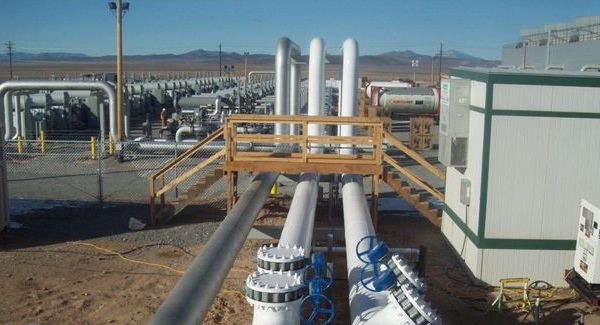Archive for January, 2009
Initial Testing at Thermo Completed

Attribution: Raser Technologies
Raser Technologies has now entered the power production business as their Thermo plant in Beaver County, Utah comes online. There are three noteworthy aspects of this project:
- Speed. This plant moved from concept to production in 18 months, breaking the land-world speed record for geothermal plant development.
- Resource. This is a low temperature, high flow rate resource unlike most geothermal fields where the resource is usually in excess of 200 C. Such resources have been thought in the past to be non-viable as recently as five years ago.
- Design. Traditionally, geothermal plants are optimized for the specific resource. In this case, 50 UTC units were ganged as a pod to create a net 10MW facility.
While in the past our entries have been somewhat skeptical of Raser’s ability to get plants designed and implemented, we want to provide credit where is due. With the resource showing much larger size than initially scoped at 230MWe of potential, Raser could be a long-term and productive entrant in the geothermal and renewable energy generation field.
Once final commission occurs in the next few weeks, the power generated will be consumed by the City of Anaheim.
New Hybrid in Town

Perhaps the Big 3 US automakers could take a lesson from Tata Motors on this. They’re introducing a micro-hybrid version of their new Nano model (pictured above.) They expect to sell 250,000 units in their first year for a small, fuel efficient vehicle. The price? $2,500.
This could be a game changer not only in India, but on the global stage. It’s reminiscent of Henry Ford’s vision for the Model T, cheap, reliable, and efficient.
Comments are off for this post
46MW PV plant online

In construction that took only thirteen months to complete, Acciona has commissioned the largest PV plant yet on the planet. At 600 acres, the plant hosts some 2,500 collectors each with a surface area of 1,500 square feet.
The plant is presumed to have a capital cost in the neighborhood of $250M and will be part of the Portuguese government’s E4 Energy Efficiency and Endogenous Energies policy. Overall, the objective is to install 150 MW, of which the Amareleja installation will account for around 30%.








